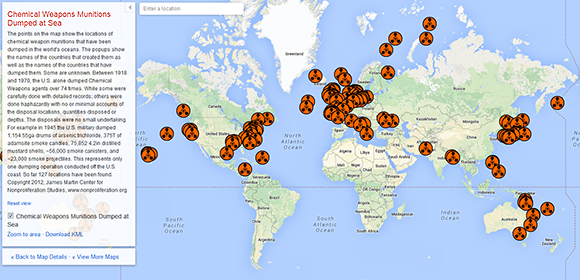Many people ask where they can get satellite imagery. Working at a nonprofit, my preferences tend towards the free, but there are some great resources on the cheap too. Why check more than one map? Because: Volkel.
Here’s a list of my favorites:
Google Earth
It’s free. Even Pro is free. It has a time slider, allowing you to look at change over time easily. You can also overlay images (or maps!). There are a ton of KMZs available for download. Some of these may be curated by experts, others are wikis, you can even make your own! Last, it’s 3D. You can import your own 3D models, calculate elevation changes, even build a missile flyout!
Google Maps has some of its own advantages — it’s easier to embed being the one. You still need to use Google Earth to see the date of the image. You can also set alerts for imagery updates, and there’s even 3D data!
Bing Maps
Bing is getting better — for example, there’s road data for South Korea now (yikes, that took a long time). The greatest advantage over the maps below is this little tool, which tells you the date of the imagery.
HERE
HERE (formerly Nokia Maps) did a massive upgrade to its imagery last year. It’s still primarily best for the US and and Europe, but you can make some great finds.
Polyglot?
Try Yandex and Baidu. Many draw from the same DigitalGlobe catalog, but may be from a different date. If you are interested in South Korea, try Daum and Naver, but they won’t help you much north of the DMZ.
USGS
This isn’t the high resolution imagery you associate with the above, but depending on your needs, it might be better. The USGS’ Earth Explorer tool lets you search an enormous database of free or low cost imagery, including declassified images and Landsat’s thermal infrared bands.
Corona Atlas of Arkansas
I actually just learned about this tool to search Corona imagery thanks to @arawnsley. I will be using it in the future!
Digital Globe Foundation
Still don’t have what you want? If you are affiliated with a university, you can apply for an image grant.


I’ve also found Apollo Mapping’s Image Hunter to be a very useful resource to find out what imagery is available for a particular location:
https://imagehunter.apollomapping.com/
For a given geographic location, it shows you all the commercial imagery available from several different providers across all the different dates and resolutions. Even if you don’t purchase the imagery from Apollo, it gives you a great idea of what’s available.
A quick guide is here:
https://apollomapping.com/ih2-guide
Probably everybody else on the planet knew about Google Earth’s “Show Elevation Profile” feature, but I only recently discovered it and it’s really neat.
– Use the ruler tool to draw a line or path.
– Click “Save” in the ruler dialog box, which will cause the line/path to change from yellow to red. Optionally, you can give it a name.
– Put the cursor on the line/path and right click. A dialog box will appear, from which you select “Show Elevation Profile.” Alternately, you can do this from the Edit tab.
– Magic ensues. An elevation profile along the path scrolls up from the bottom of the screen and a red arrow appears on the path on the main screen. You can slide a vertical cursor on the profile and the arrow will follow along.